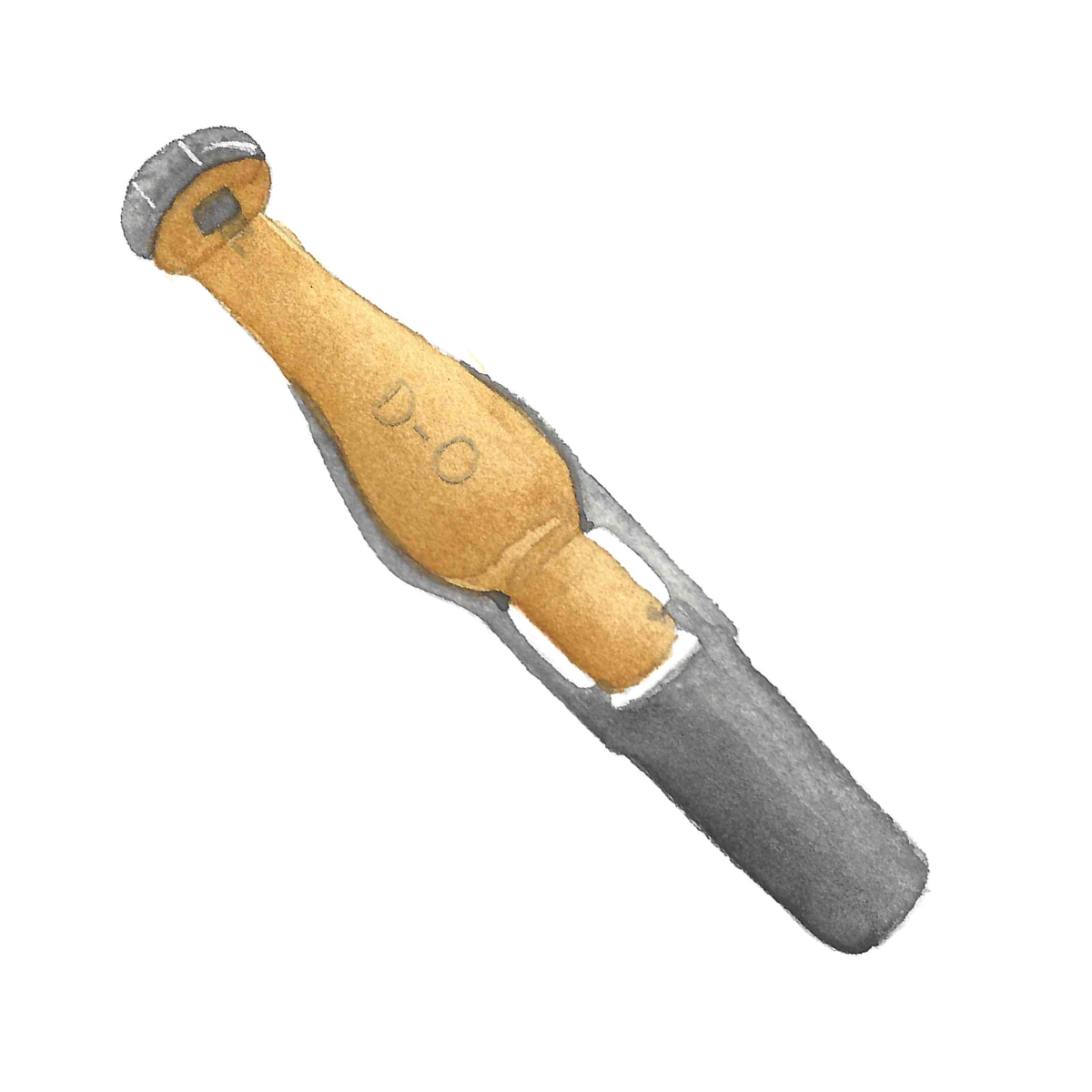Everything You Need to Know About Dip Pens
AN EASY GUIDE TO ESSENTIAL ART TOOLS
Dip Pen Anatomy | Holders | Nibs | Popular Brands | 10 Tips
Welcome back to my official blog guide, “What’s in the Box!?”
And today we are going to approach the topic of dip pens.
Today we will be discussing “Everything You Need to Know About Dip Pens” however, I have been told that some people find this presentation - meaning everything being in one place - overwhelming. So, you can choose to read on with everything right here, or you can follow one of the links above to jump to a different blog post where the information has been divided into parts.
Throughout the millennia there have been many forms of writing, but hand written scripts have been one of the most common throughout history. Writing by hand requires a delicate tool and various instruments have been conceived, but one of the most popular, even to this day, is known as the dip pen. Although versions of such a pen have been found throughout all of the common era, it was not until the early 1800’s that this technology started to be mass produced. These pens do not have an on-board reservoir so they require frequent recharging when in use. Ink then, is instead accessed from a shallow bowl or bottle that can be drawn from when writing or drawing.
Despite many technological advances since the 1800’s, such as the development of the fountain pen, ball point pen, felt tip pen and others many writers, calligraphers, and artists continue to dabble with this old fashioned technology. Considering just how long the dip pen has been around, it’s no surprise that there have been may different types of pen holders, and nibs created over the years, some which are more common than others. Today we will go over just a few of the more common dip pen designs.
THE DIP PEN
DIP PEN ANATOMY
The Tip
The tip is the only part of the nib that is going to be making direct contact with your writing surface. Over time the tip of the nib (or the tines) can get worn out or they may end up deforming, bending, or breaking. When this occurs it is important that you replace the nib as soon as possible as this can lead to other inconveniences such as randomly splattering ink or potentially damaging the surface being written or on.
The Tines and Slit
The tines and slit are the three parts that make up the tip of the nib. The tines are the most fragile part of the nib, and fine pointed nibs in particular can easily snag and damage not only the thing it snags, but also can bend or damage the tines of the nib.
It is the slit that allows a steady stream of ink to the tip of the nib.
The Body and Heel
The body and heel of the nib get inserted into the pen insert, keeping the nib snuggly fit.
The Pen Insert and Holder
The pen insert is the location where the nib gets attached to the pen holder. Remember to remove the nib from the pen insert so that they do not rust together. Pen holders come in a few different shapes and sizes. You have the standard - ‘classic’ or ‘straight’ - oblique, and quill.
TYPES OF PEN HOLDERS
STRAIGHT
Known as a straight pen holder, this is a design that allows for the nib to be placed directly into the body of the pen holder. The type displayed is known as the “Classic” style and is a more traditional design which uses metal prongs and friction to hold most standard 9mm nibs. It is typically made of wood and is dipped in a protective layer of paint. Keep in mind that any prolonged contact with water will warp and swell the wood which may damage the paint causing it to break or fall off.
OBLIQUE
Known as an oblique pen holder, this is a design that requires a 9mm nib to be placed off to the side of the pen holder, typically made of a plastic or metal material, which off sets the position of the nib allowing a right handed calligrapher to more easily create a lettering style that features a slant. Some - but not all oblique pen holders - allow the off set nib holder to be removed and will instead function as - what is called a “Standard” straight pen holder that uses a ring of plastic as well as friction to hold most standard nibs.
QUILL
Known as a quill pen holder, this handle is uniquely designed to handle “quill nibs” (known as crow or hawk quill nibs). Quill nibs are about 3mm in width, and mimic the old fashioned feathered pens of the same name which are cylindrical in shape. This style of pen holder is almost exclusively (see Comic Nib Holders) made of brown plastic and are relatively thin and small in size which can become uncomfortable after prolonged use.
COMIC
The Comic pen holder is a straight styled pen holder that is uniquely designed to fit both the standard and quill styled nibs. This design is perfect for artists who may wish to switch between both styles of nibs without having to stop and switch out nib holders as well. As you can see the pen insert features two rings which can tightly and easily secure either size nib. These nib holders are a great alternative to the small and uncomfortable quill pen holders mentioned above.
GLASS
There are two more common types of glass nibs, but there are quite a few designs out there. The first has a much longer, spiraled pen nib while the other has a shorter and fatter nib. Either version uses this area to hold and discharge the ink and with the help of gravity, it will slowly make it’s way down the glass until it is once again necessary to recharge.
TYPES OF NIBS
While there are many types of nib holders, the variety does not hold a candle compared to just how many types of pen nibs there are. While some are designed for general writing, others for drawing, and yet others for calligraphy, the world has many options to choose from. So I am going to be reviewing a general list of available nib types.
POINTED
Pointed pen nibs have relatively fine tips and are designed for both writing and/or drawing. Some of these nibs are more flexible than others and more flexible nibs are ideal for both the artist and calligrapher where a variety of line widths are desired. You can easily get both hairline widths, if you have a soft touch, as well as thicker lines if you apply more pressure to the nib.
QUILL
This style of pen nib is designed to mimic the abilities of the old fashioned writing quills made from the flight feathers of various birds including the goose, crow, eagle, owl, and hawk. Today we have different versions of quill nibs based on both the Crow and Hawk feather. You can get varied line widths with this nib, it just depends on the nibs stiffness. These are often used for delicate line work and are noted for their usefulness when crosshatching thanks to their particularly fine tip compared to other pointed nibs.
*These nibs are sometimes referred to as mapping, or maru pen nibs depending on the manufacturer and not all mapping nibs are fully cylindrical.
MONOLINE
Monoline is a style of writing that means every line, no matter the direction, the thickness or line weight will remain the same. So a monoline nib is designed to accomplish this. There are a wide variety of monoline nibs out there, many of them are quite firm to help keep your line widths more consistent. But some, like those that fall under the pointed category, may still provide a little bit of variation depending on how much pressure is applied, such as the ever trusted school nib.
SQUARE AND ROUND
Pictured here are two examples. First a square nib, the A style - pictured above, and second a round nib, or the B style - pictured on the right. Both the square and round nibs are monoline nibs available in 6 sizes so as to meet any artist’s needs. A Larger nibs will fill large areas more quickly, so depending on your style of art, you may find this variation of nibs to be particularly useful. Similar round nibs are sometimes referred to as “Ornamental” nibs.
BROADEDGE
Broadedged nibs are similar to monoline nibs, but these are known for their ability to create both thin and thick lines depending on the direction they are being pulled in. Up and down strokes as well as diagonal strokes will be thicker, while side to side marks will be result in a consistent thin line weight.
Flat, Oval, and Left Hand:
You can see the different sizes that are available depicted in the image below.
Monoline Square: A-0, A-1, A-2, A-3, A-4, A-5
Monoline Round: B-0, B-1, B-2, B-3, B-4, B-5
Broadedge Flat: C-0, C-1, C-2, C-3, C-4, C-5
(C is also available in Left Hand)
Broadedge Oval: D-0, D-1, D-2, D-3, D-4, D-5
Nib Gallery:
There are 29 nibs in all listed below.






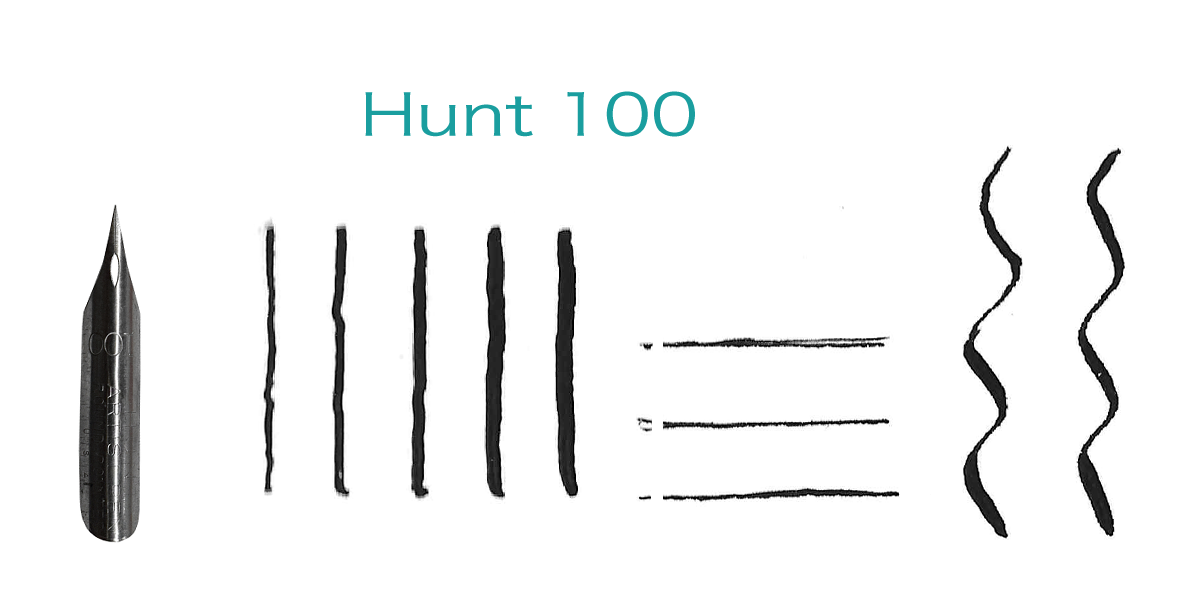

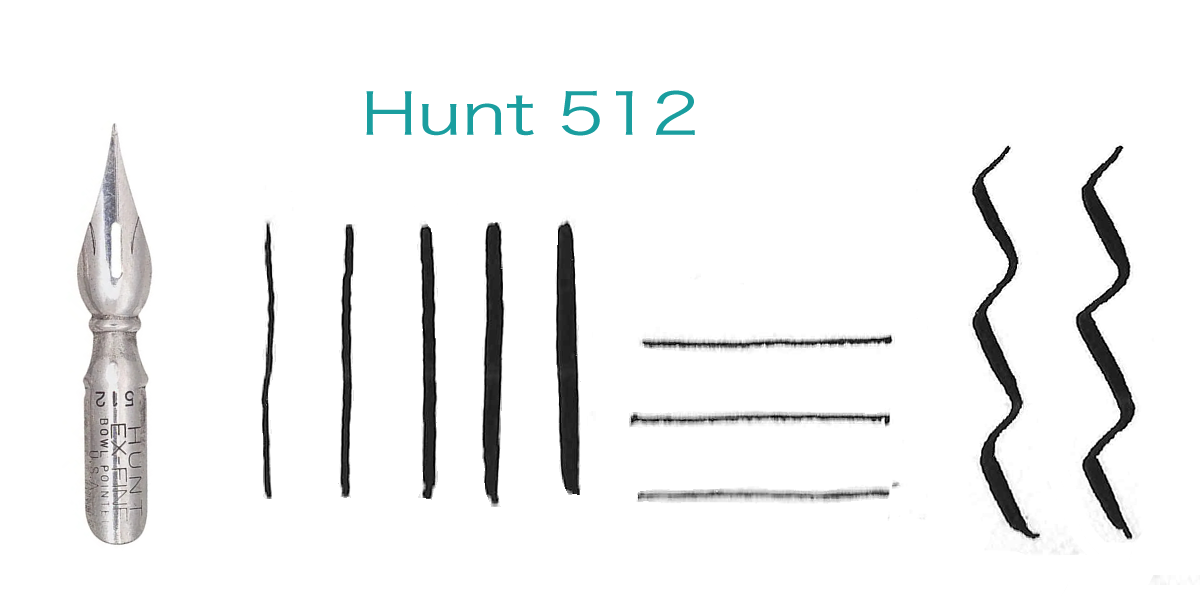

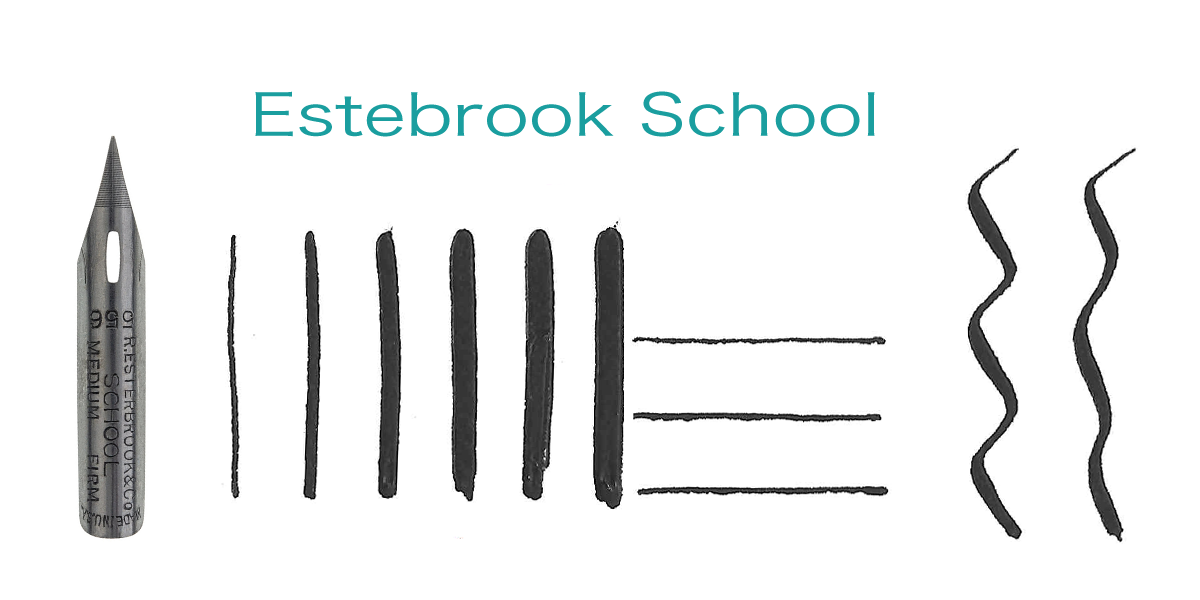


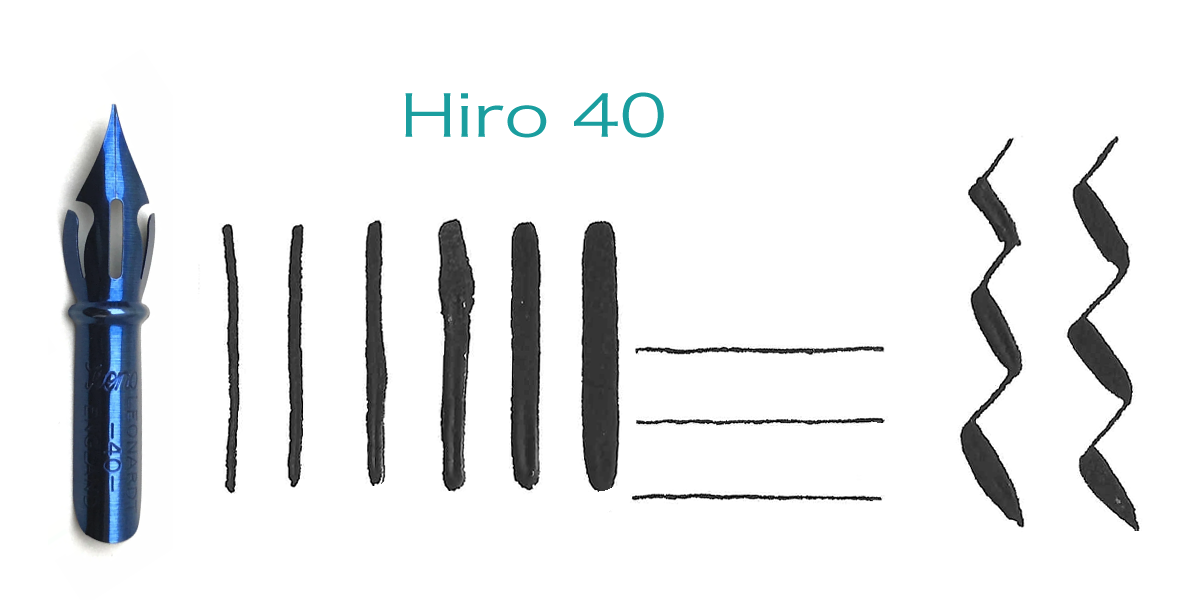















POPULAR BRANDS
TACHIKAWA COMIC SET
The Tachikawa Comic Set includes a Mapping (Quill) Nib, School Nib, Japanese Nib, G Nib, and Bowl Nib.
Comic nibs are famous for producing strong and crisp lines that are difficult to duplicate with pens and brushes. They are great for creating detail in drawings.
COMIC PEN NIB HOLDER
The Tachikawa Model 36 - This holder is compatible with both regular and round nibs. The holder features special double rubber rings at the tip; the inner ring can take smaller round nibs and the larger ring can take regular nibs. The rubber grabs the nibs tightly, preventing shifting when drawing.
SPEEDBALL
Speedball takes measures to ensure that each of their nibs meets even the most discerning standards. In addition to the team that is responsible for making the Speedball nib, they have dedicated team members who hand-inspects all nibs that pass through production. That way artists never have to worry about their writing experience when using a trusted Speedball nib. Offered in a range of widths and varying degrees of stiffness in order to provide the maximum amount of control, Speedball’s Pointed and Crowquill Nibs are hand-crafted in the USA. *Hunt Dip Pen Nibs are crafted by Speedball.
STANDARD PEN NIB HOLDER
Speedball has been a trusted name in handcrafted nibs and pens for the calligrapher, letterer, and drawing artist for over 100 years. This nib holder is made of durable plastic and holds a variety of standard nibs.
#102 CROW QUILL NIB HOLDER
Use this slender nib holder with the Speedball Crow Quill and Hawk Quill mapping nibs listed under Recommended Refills/Parts. Mapping nibs produce extremely fine lines, making them ideal for drawing intricate details.
MOBLIQUE
This 2-in-1 penholder can be used as an oblique or straight holder. Its oblique brass flange can hold pointed pen nibs and after removing the flange, you can use it as a straight holder for broad edged calligraphy or offhand flourishing. This penholder is super lightweight weighing 8 grams and has a comfortable medium-sized maximum thickness of about 14mm. It also features a small curved shaped dip in the front of the holder for your index finger to rest on.
10 DIP PEN TIPS
YOU SHOULD KNOW BEFORE USING DIP PENS!
NIB FOR THE JOB
It might be important to discuss the fact that you do not necessarily need a wide selection of nibs, you simply need a nib and holder that have the qualities necessary for your needs. Most pointed nibs are very similar - the major differences being the size, flexibility, and how much ink it is capable of holding. If you struggle with applying the appropriate pressure, a firmer nib would be easier to work with, but they may not provide as thick a line as a slightly more flexible nib.
Typically artists use G nibs be it Tachikawa, Nikko, or Leonardt - which can be slightly firmer but give a nice variety of lines. Mapping or quill nibs by Tachikawa or Speedball are good for very thin and consistent lines making them appropriate for cross hatching. The Blue Pumpkin by Brause is a very commonly used nib with a medium firmness giving a nice variety of line widths and a lot of control.
For filling in large areas most artists will use a paint brush or a brush pen like the Pentel Pocket Brush Pen, or you can use a calligraphy nib like the monoline or broadegde which can be found in larger sizes that cover much larger areas.
INK CARRYING CAPACITY
The amount of ink a nib holds will determine how often you will need to recharge your pen. This can usually be determined by sight as a smaller nib with smaller or fewer vents and slimmer shoulders do not have the surface area to hold a lot of ink, but some nibs can be deceiving.
For example, the Brause 66 is a very small nib but it is deep and has three vents which gives ink a lot surfaces to cling to - but it is also very flexible and a lot of ink is necessary for the wider line widths it is capable of. I mentioned the Blue Pumpkin earlier which is a much larger nib but similar in construction to the Brause 66 with three vents, in addition it has wide shoulders which makes it capable of carrying a lot of ink.
Gillott on the other hand has many small nibs, in every sense of the word, and do not cary as much ink. Other nibs like the Hunt 99 may have a larger heel but the body of the nib is much smaller than other nibs and holds as much ink as a Gillott. You can view these, and other nibs, in the Nib Gallery above.
TYPES OF INK
While dip pens are capable of using a wide variety of inks, commonly indian, acrylic, and sometimes alcohol inks, it is important that the ink you use is non-clogging. Certain inks will clog preventing the ink to flow from the vent, down the slit, and to the paper. Because of this, you want to make sure that the ink you buy is compatible with dip pen; most companies will explicitly state if their inks work well with dip pens or not. As an artist it is preferable to use waterproof ink so as you build up layers you won’t get any bleeding or lifting - unless you otherwise want to use this to your advantage. Suggested waterproof brands include: Dr PH Martins India Inks, and Magic Color Acrylic Inks.
NEW NIBS
Newly manufactured nibs are coated with a protective oil or sometimes a shellac to prevent rust and wear until they are ready to be used. It is important to remove this before using that nib or it will not perform properly. A good test is to see if the ink clings to the nib or not. If the ink is repelled, or it slides right off, there is probably a protective layer that will need to be removed.
To prepare them with oils you can easily clean them with soap and water, just give it a gentle scrub. Shellac on the other hand can be a bit trickier as its method is commonly to burn it with a match or lighter and/or can be scraped off if necessary. Heat, however, can damage the nibs so take great care with this technique.
UP KEEP
It is very important that nibs be fully removed from their holders and cleaned between uses. This is, primarily, to prevent rusting as this damages the nib and corrodes the metal. Over time, if the nib is not removed from the holder, the nib can get stuck or rust into place and can damage both the nib and handle. Additionally, not taking steps to clean and upkeep your nibs can lead to dried ink and other debris clogging your nibs preventing a clean flow.
Most inks can be washed away with just water, although you can add soap to facilitate with cleaning if water alone is not working. You can also purchase Cleaning Fluid which provides a bit more ‘elbow grease’ for particularly stubborn inks - but you can just use household cleaning agents instead.
Storage
Organizing and storing your nibs can go a long way in prolonging their life. Nibs are relatively fragile things, and they rely on you to keep them dry and away from anything else that has the potential to bend scrape, or otherwise destroy them. They can easily snag, bend, or break so I suggest a stiff sided tin or plastic container that is separate from your other art tools.
PAPER
Not just any paper can be used with dip pens, partly due to the nib itself and partly because of the ink.
From the point of view of the nib, some papers are made of a fibrous material that can easily snag the tines of the nib and this can tear the paper or, most often, it will cause the ink to splat on the page. The nib itself can also be damaged by these fibers by potentially bending the tines out of place. Smooth papers are suggested so as to avoid this particular problem.
On the other hand, some papers just aren’t absorbent enough for the ink used with dip pens. The ink is relatively thin, especially compared to ball point pens, thus they require a paper that won’t bleed when written or drawn on. Although some bleeding may be expected, with a heavy weighted paper it is less likely to cause unsightly bleeds.
TYPES OF METAL
Most dip pen nibs are made of stainless steel or brass, while others might be made of gold or silver. More recently brands are turning to titanium which seems to improve on the qualities of the other materials.
SIZE
It can be hard for us not to opt for picking up a few cheap brushes rather than just ask for water!
FLEXIBILITY
The material and the design of each individual nib will effect how stiff the nib is and how much pressure is needed to get the right line. A stiffer nib may not get as many line widths but usually you can rely on it’s constancy. This is particularly useful if you struggle to control your pressure, or if you want a more consistent line weight. Other nibs are much more flexible but they don’t necessarily need as much pressure to achieve those different line widths. I have accidentally bent or broken tines by simply pressing too hard, so when you first use a nib, do so with a bit of caution until you are sure of it’s tenacity.
Bonus: LEFT HANDERS
Many nibs are fine for people who are either right or left handed, however there are a few exceptions. If we are looking at the broadedged C nibs by both Speedball and Tachikawa, these nibs have a slight slant which can assist in certain writhing styles. However, the “normal” C nibs are designed with the right handed artist in mind, so those left handed creators need to be aware of this.
Not all is lost, however, as they produce an “LC” line which is slanted in the opposite direction for all of our left handed friends out there. In addition to our slanted nibs, left handed artists don’t require an oblique pen handle for slanted scripts as left-haded artists usually write this way more naturally. So for the most part, oblique pen holders are really designed for right-handed artists. 10 DIP PEN TIPS
FIN
That’s it for today, thanks for reading!
I’m MK and this is Draw Daily!












